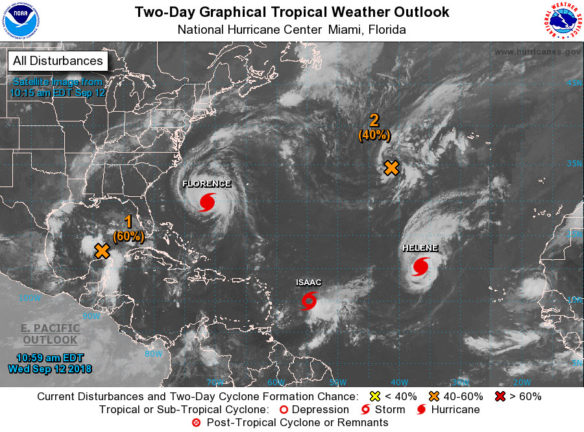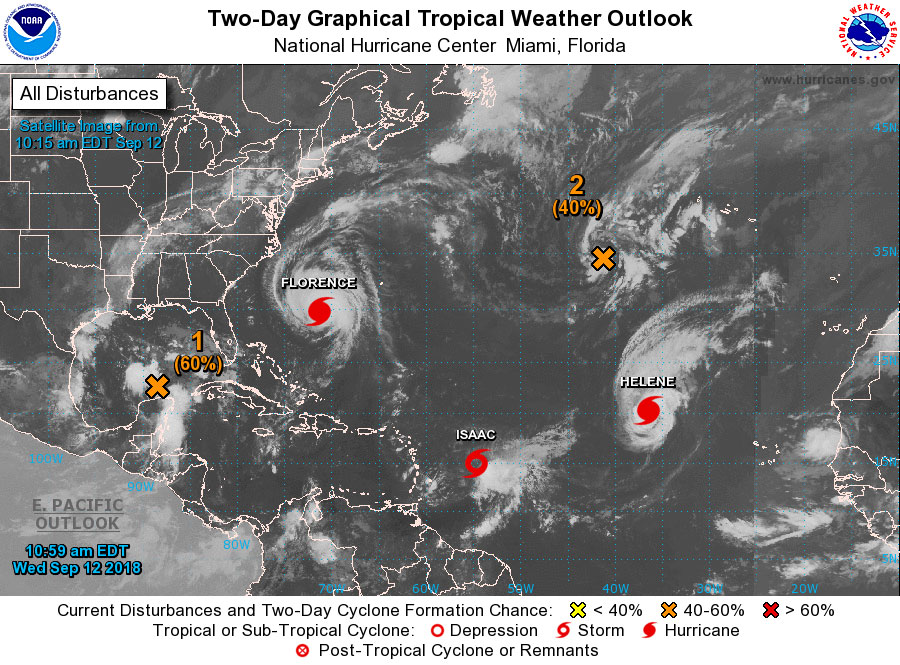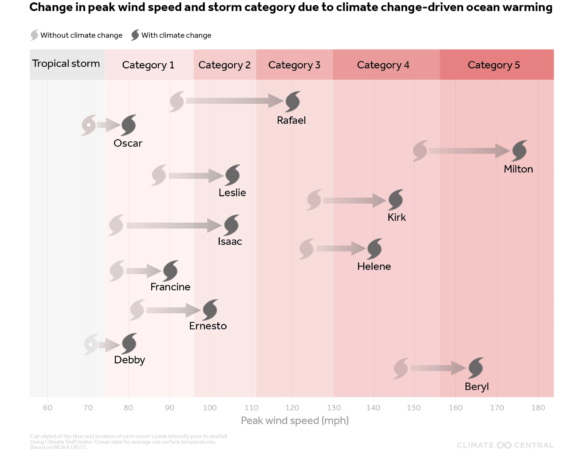
The National Hurricane Center is issuing advisories on Hurricane Florence, located over the western Atlantic Ocean, on Hurricane Helene, located over the eastern Atlantic, and on Tropical Storm Isaac, located several hundred miles east of the Lesser Antilles. Image and captions: NHC / NOAA
By USGS;
Hurricane response crews from the U.S. Geological Survey are installing storm-tide sensors at key locations in Puerto Rico from Cabo Rojo to Naguabo in advance of Hurricane Isaac. Under a mission assignment from the Federal Emergency Management Agency, the USGS plans to deploy about 20 sensors along the island’s coast
Storm surge is among the most dangerous natural hazards unleashed by hurricanes, with the capacity to destroy homes and businesses, wipe out roads, bridges, water and sewer systems, and profoundly alter coastal landscapes. The USGS has experts on these hazards, state-of-the-science computer models for forecasting coastal change, and sophisticated equipment for monitoring actual flood and tide conditions.
The sensors being installed to measure Hurricane Isaac’s storm tide are housed in vented steel pipes a few inches wide and about a foot long. They are being installed on bridges, piers, and other structures that have a good chance of surviving the storm. The information the sensors collect will help define the depth and duration of a storm surge, as well as the time of its arrival and retreat. That information will help public officials assess storm damage, discern between wind and flood damage, and improve computer models used to forecast future floods. Information on the storm-tide sensor deployment and the incoming data will be available on the USGS “Flood Event Viewer” at https://stn.wim.usgs.gov/FEV/#IsaacSep2018.
In addition to storm-tide sensors in Puerto Rico, one rapid deployment gauge will also be installed on St. Thomas in the U.S. Virgin Islands. These specialized gauges can be quickly installed on bridges to provide real-time information on water levels to provide critical information to the National Weather Service, FEMA and other USGS partners involved in issuing flood and evacuation warnings and in coordinating emergency responses to communities.
The USGS studies the impacts of hurricanes and tropical storms to better understand potential impacts on coastal areas. Information provided through the sensor networks provides critical data for more accurate modeling and prediction capabilities and allows for improved structure designs and response for public safety.
As the USGS continues to take all appropriate preparedness and response actions in response to Hurricane Isaac, those in the storm’s projected path can visit www.ready.gov or www.listo.gov for tips on creating emergency plans and putting together an emergency supply kit.









